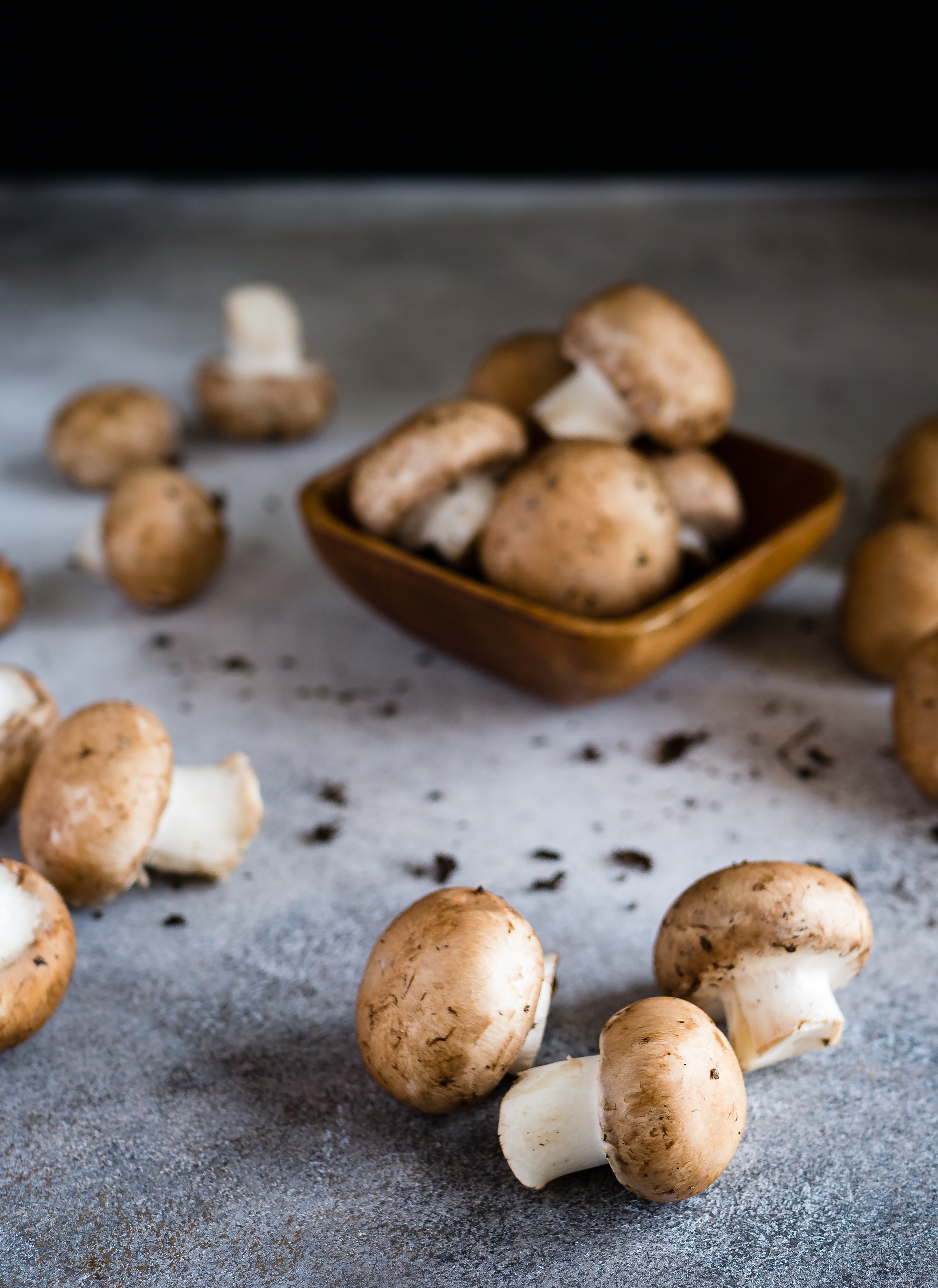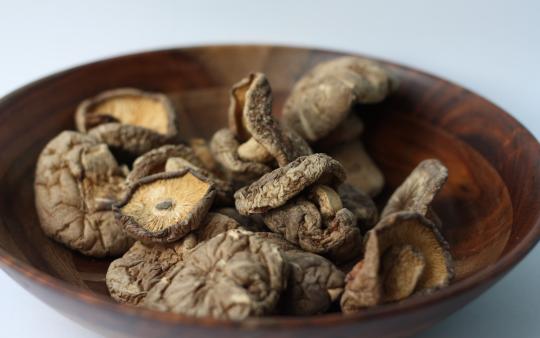As a child, I remember how my grandfather used to love to go mushroom-picking in the forest, delighting us with his bounty of wild, edible mushrooms. And when I visited my auntie’s European home, I recall the place being filled to the brim with drying wild mushrooms, and how she taught me to make the most delicious risotto. Little did I know then that I was being introduced to such a valuable food and medicine.
Can Mushrooms Really Save The Planet?
Mushrooms are the fruit of mycelium, a microscopic network of roots that grows into or around a food source. While mushrooms have a relatively short lifespan, the mycelium can live on for many years, producing their fruit in annual crops.
Classified as immunomodulating herbs, medicinal mushrooms have complex interactions with the immune system, and are used by herbalists to restore balance. Traditionally taken for long periods of time and administered in a tonic, soup, broth, or tea, medicinal mushrooms have an extensive history of use throughout Asia, Europe, and North America as both food and medicine. And while people indigenous to the land have long held medicinal mushrooms in high regard, they are just beginning to gain traction in Western medicine for their abilities.
Mycologist Paul Stamets believes mushrooms can save the world. He describes the mushroom’s mycelium as a cobweb-like cellular network that sends out enormous clusters of enzymes, antimicrobial agents, and antiviral compounds as it grows in the ground beneath our feet, and in the forest all around us. He believes that partnering with mycelium improves environmental health both within the body and with the environment. In his experiments Stamets has also discovered some other surprising capabilities of mycelium, such as cleaning up oil spills (mycoremediation), combating insects, and in some strains as antivirals.
Why Your Body Loves Mushrooms
While all mushrooms - including those cute little button ones - contain health-boosting properties, medicinal mushrooms have the distinction of containing high concentrations of immune system-enhancing and anti-inflammatory components.
Long Chain Polysaccharides
Long chain polysaccharides, particularly alpha-and beta-glucan molecules, are responsible for most of the immune benefits of medicinal mushrooms. Beta-glucans have been termed “biological response modifiers” due to the extensive array of functions attributed to them. Research has shown that polysaccharides stimulate the non-specific immune system (the immune system we are all born with and which precedes adaptive immunity) and have the ability to stimulate specific immune cells such as macrophages, natural killer cells, T cells, and immune cytokines. They may also modulate the composition of gut microbiota.
Triterpenes
Triterpenes in mushrooms provide the complementary actions of blood pressure regulation, cholesterol reduction, blood sugar regulation, immunomodulation, oxygen uptake, and liver protection. One of the key triterpenoids for mitochondria support is betulinic acid, which has been shown to induce mitochondrial apoptosis (programmed cell death) in different cancer cell lines and is particularly effective in neuroectodermal and malignant brain tumours, ovarian cancer, leukaemia, head and neck squamous cell cancers, and melanoma.
Caution: Before heading off to your local forest to forage for your own mushrooms, keep in mind that, at best, some mushrooms contain indigestible fibre that isn’t pleasant to eat, and, at worst, can cause sickness or even death. Save that job for trained mycologists!

Foraging Fun: A Mushroom Harvest Guide
Adapted from “Mushroom Harvest” by George Vaughn. Canadian Journal of Herbal Medicine.
Coming in a variety of shapes, sizes, and healing properties, mushrooms can be a helpful way to improve many conditions. While a few of the mushrooms on this list may be in your usual weeknight fry-ups (hello, shiitake!), most are consumed in powder form. Always consult with your healthcare provider to make sure that medicinal mushrooms are right for you!
Artist’s Conk
Ganoderma applanatum
Key component: Polysaccharides, triterpenes
Actions and indications: Antifibrotic, anti-inflammatory, antioxidant, anti-tumour, antiviral, hypoglycemic, immune tonic
Taste: Bitter, bland sweetness
Energy: Nourishing
Often used as an artist’s medium as the mushroom’s tendency to bruise easily makes for unique expression in the pore’s surface.
Birch Polypore
Piptoporus betulinus
Key components: Betulin, betulinic acid, agaric acid, beta-glucans
Actions and indications: Anti-tumour, immunomodulator
Taste: Bitter, bland sweetness
Energy: Nourishing
Growing primarily on damaged or dead birch trees, this polypore has been used for thousands of years as a curative and has been found in Bronze Age artifacts.
Chaga
Inonotus obliquus
Key component: Betulinic acid, generates superoxide dismutase
Actions and indications: Anti-inflammatory, antioxidant, anti-tumour, antiviral, immunomodulator
Taste: Bitter, bland sweetness
Energy: Nourishing
Most often found with birch trees in boreal regions, it has a taste similar to coffee when brewed.
Cordyceps
Cordyceps sinensis
Key component: Nucleoside derivatives
Actions and indications: Arrhythmia, asthma, cholesterol, endurance, fertility, immunomodulator, impotence, lung disorders, vitality
Taste: Bitter, bland sweetness
Energy: Nourishing
Popular with athletes due to its ability to increase physical endurance.
Lion’s Mane
Hericium erinaceus
Key component: Cyathane derivatives, including hercenones and erincacines
Actions and indications: Alzheimer’s disease, brain function, dementia, mental acuity, multiple sclerosis, neuron regeneration, neuropathy
Taste: Bitter, bland sweetness
Energy: Nourishing
In Asia, Lion’s Mane is believed to increases users’ bravery and strength. Recent research supports its ability to improve cognitive function and increase nerve growth factor (NGF).
Maitake
Grifola frondosa
Key component: Beta-glucans
Actions and indications: Anti-tumour, immunomodulator
Taste: Bitter, bland sweetness
Energy: Nourishing
Maitake means dancing mushroom in Japanese. It’s believed people danced with joy upon finding such a healing mushroom!
Mesima
Phellinus linteus
Key components: Polysaccharides
Actions and indications: Allergies, angina, anti-cancer, antiviral, diabetes, diarrhea, immunomodulator, leucorrhoea, rheumatoid arthritis, wound healing
Taste: Bitter, bland sweetness
Energy: Nourishing
Identified by Paul Stamets as having the greatest macrophage activation (or ability to defend against pathogens) among seven popular mushroom species.
Red Reishi
Ganoderma lucidum
Key component: Polysaccharides, peptidoglycans, and triterpenes
Actions and indications: Allergies, arrhythmia, asthma, hepatoprotective, hypertension, immunomodulator, insomnia, vitality
Taste: Bitter, bland sweetness
Energy: Nourishing
Believed to be the mushroom of immortality, reishi is one of the most thoroughly researched mushrooms. Notably used by climbers in the Himalayas to improve oxygen exchange.
Royal Sun Agaricus
Agaricus blazei
Key component: Polysaccharides
Actions and indications: Allergies, anti-tumour, antiviral, diabetes, hepatoprotective, immunomodulator
Taste: Bitter, bland sweetness
Energy: Nourishing
Discovered in Brazil, made popular in Japan as an edible.
Shiitake
Lentinus edodes
Key component: Polysaccharides, eritadenine
Actions and indications: Anticancer, antiviral, cholesterol, immunomodulator, reduces inflammation in the lungs
Taste: Bitter, bland sweetness
Energy: Nourishing
Rich in polysaccharides and high levels of B-vitamins, shiitake can be easily introduced into everyday diet.
Turkey Tail
Trametes versicolour
Key components: Polysaccharides
Actions and indications: allergies, anti-inflammatory, autoimmune disease, chronic fatigue, degenerative disorders, diabetes, fibromyalgia, immunomodulator
Taste: Bitter, bland sweetness
Energy: Nourishing
Well known for immunomodulating polysaccharides PSP and PSK, which are similar to glycoproteins.
Slow Cooker Immune-Booster Broth
Adapted from David Winston, RH.
While medicinal mushrooms are extraordinary functional foods that are high in trace minerals, B-vitamins, and fibre (cellulose, lignin and chitin), some are also quite tasty, including those used in this recipe.
Ingredients
- 2 lbs lamb or turkey bone (preferably grass-fed/pastured)
- 3–4 oz reishi mushroom
- 3–5 astragalus sticks
- 1 tbsp apple cider vinegar
- 2 carrots, chopped
- 2 celery stalks, chopped
- 1 oz nettles
- 1 oz alfalfa
For a vegetarian version, replace bones with 3 oz each of oat straw and burdock root.
Instructions
- In a large crock pot, place bones (or oat straw and burdock root), mushroom, and astragalus. Fill pot close to full with filtered water. Add apple cider vinegar.
- Simmer on low, slightly covered, for three days, adding water as needed.
- Late on the third day, add vegetables and continue to cook until veggies are very soft.
- Strain liquid into a pitcher, discard solids, and refrigerate.
Dose: Use for immune broth as needed or pour broth into ice cube trays and freeze, taking one cube a day either dissolved into other foods or with boiling water as a broth.
Easy Chaga Java Recipe

Ingredients
- 1/2 ground Chaga
- 1/2 ground coffee
Instructions
Simply decrease the amount of ground coffee by half and replace it with ground Chaga, then prepare as usual. You can also do the same when preparing espresso. Chaga can eventually replace coffee altogether.
Dose: Therapeutic dose is three cups per day.
You may also enjoy: Foraging Fun in the Fall, Reishi Relief for Allergy Aggravation, and Nature Adventures in Your Own Backyard.
For references visit ecoparent.ca/twf/sum20



